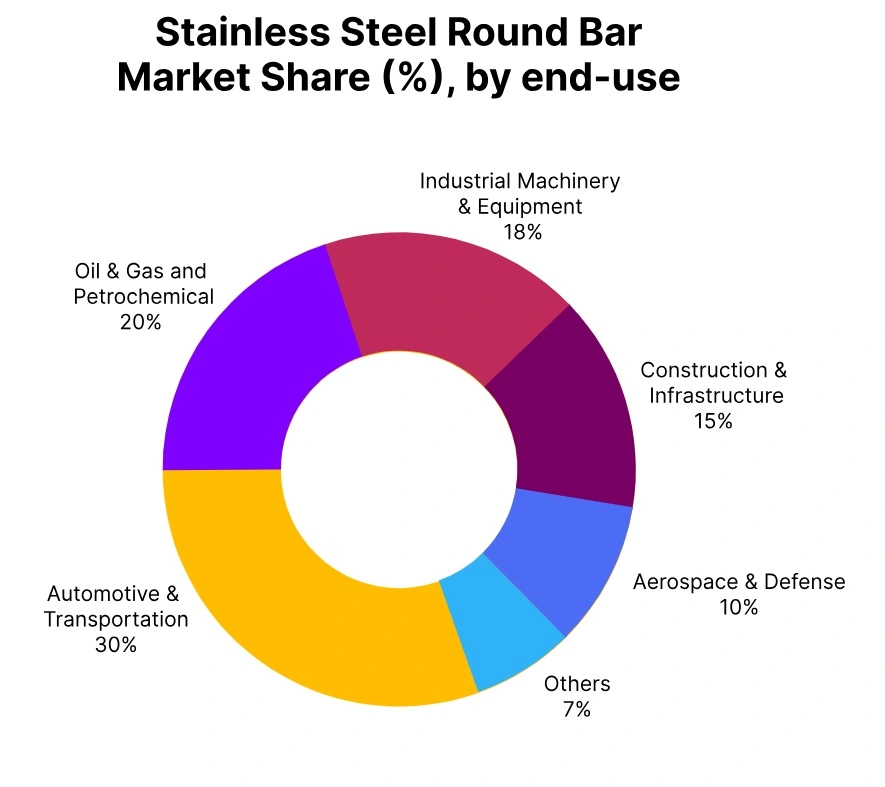Price-Watch’s most active coverage of Stainless Steel Round Bar price assessment:
- 304-50mm FOB Shanghai, China
- 304-15mm Ex-Mumbai, India
- 304-50mm FD-Willich, Germany
- 304-50mm Del Alabama, USA
Stainless Steel (SS) Round Bar Price Trend Q3 2025
The worldwide Stainless Steel (SS) Round Bar market exhibited a mixed pattern in Q3 2025. In certain regions of the world, demand from various sectors resulted in moderate increases, while other regions faced pressures from import competition and weaker industrial activity.
Stable raw material costs kept volatility low, and production rates were largely aligned with prevailing consumption patterns. September saw limited price improvements in most markets due to short-term restocking, but overall sentiment remained reserved heading toward the year’s final quarter.
Germany
Stainless Steel (SS) Round Bar Domestic prices FD- Willich, Germany, Grade- 304-50mm.
The Stainless Steel (SS) Round Bar price trend in Germany declined by 1.34% in Q3 2025, as sluggish demand from machinery and automotive sectors combined with competitive imports from neighboring European markets applied downward pressure on prices. Producers maintained output levels to meet contract commitments, but excess supply limited pricing flexibility.
The strong euro also reduced export competitiveness, impacting foreign sales. Stainless Steel (SS) Round Bar prices in Germany increased slightly by 0.05% in September 2025, aided by minor replenishment purchases from industrial processors and distributors, though the overall demand backdrop remained weak.
USA
Stainless Steel (SS) Round Bar prices EX Alabama, USA, Grade- 304-50mm.
In Q3 2025, the Stainless Steel (SS) Round Bar price trend in the USA increased by 0.99%, underpinned by strong consumption from the aerospace, energy, and heavy equipment sectors. Domestic offers received upward momentum as supply has been constrained by mill maintenance schedules and limited import arrivals.
Demand remained steady with procurement steady from end-users maintaining supply-demand equilibrium. In September 2025, Stainless Steel (SS) Round Bar prices in the USA increased by marginal 0.04% aided by the consistent, yet tentative demand which reflected continuous distributor replenishment of stock to cover ongoing project requirements while also absorbing recent macroeconomic mixed signals.
China
Stainless Steel (SS) Round Bar Export prices FOB Shanghai, China, Grade- 304-3mm.
According to Price-Watch, in 3Q 2025 the Stainless Steel (SS) Round Bar price trend in China dropped moderately, declining by 0.91% impacted by poor demand from the manufacturing, engineering, and construction sectors. While mills kept production levels constant, domestic supply remained ample, and exports weakened as competition intensified from producers in Southeast Asia.
Raw material costs have been stable and haven’t provided producers with motivation to increase prices. Buyers have been cautious about purchasing activity to avoid excess inventories. Stainless Steel (SS) Round Bar prices in China dropped slightly in September by 0.55% due to weakened seasonal demand and market participants’ choice to place less and smaller orders, illustrating continued caution in the market for SS Round Bar in China.
India
Stainless Steel (SS) Round Bar Domestic prices EX-Mumbai, India, Grade- 304-15mm.
According to Price-Watch, the price trend of Stainless Steel (SS) Round Bar in India fell by 0.80% in Q3 2025, pressured by slower consumption from fabrication and infrastructure projects along with competitive import offers from regional suppliers. Domestic mills faced challenges in sustaining prices despite stable input costs, as overall industrial activity showed only marginal improvement.
Cautious buying behavior persisted across the market, with most traders refraining from bulk procurement. Stainless Steel (SS) Round Bar prices in India rose by 0.50% in September 2025, supported by mild restocking ahead of festive season demand and selective large-project orders that temporarily boosted market activity.


